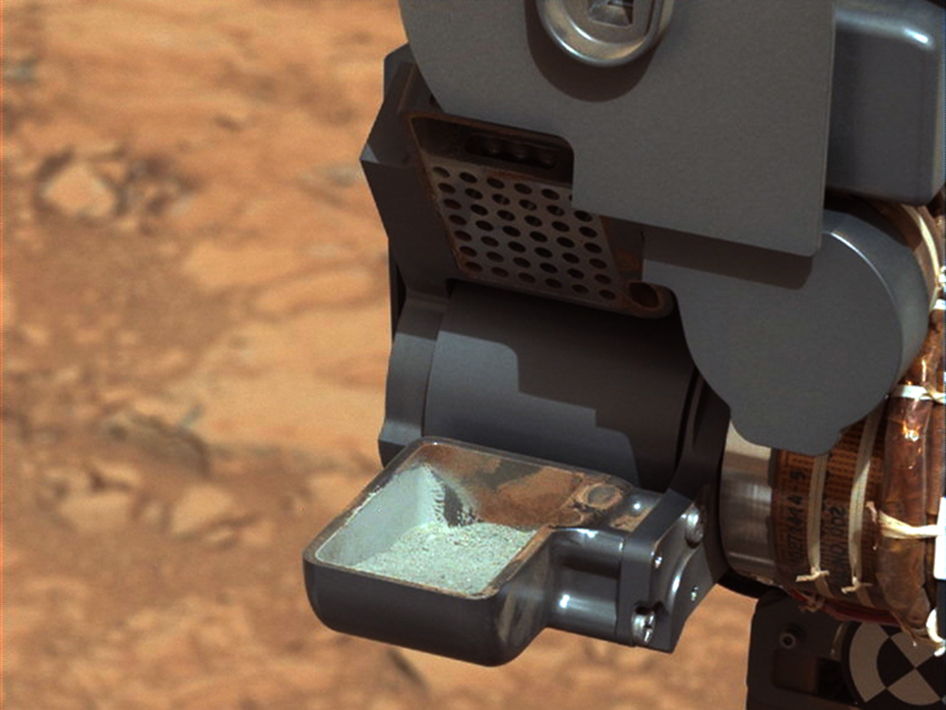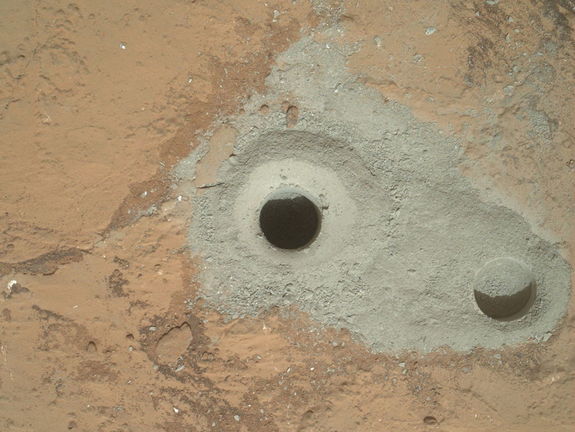
The Red Planet's signature color is only skin deep.
NASA's Mars rover Curiosity drilled 2.5 inches (6.4 centimeters) into a Red Planet outcrop called "John Klein" earlier this month, revealing rock that's decidedly gray rather than the familiar rusty orange of the Martian surface.
"We're sort of seeing a new coloration for Mars here, and it's an exciting one to us," Joel Hurowitz, sampling system scientist for Curiosity at NASA's Jet Propulsion Laboratory (JPL) in Pasadena, Calif., told reporters Wednesday (Feb. 20).
Mars gets its red coloration from a surface layer of dust that has undergone a rusting process, during which iron was oxidized.
Curiosity's hammering drill allows scientists to peer beneath that dusty veneer for the first time ever, and the early views at John Klein — where the rover performed its first full-up drilling and sample-collection operation — are intriguing, rover team members said.

The gray powder Curiosity collected "may preserve some indication of what iron was doing in these samples without the effect of some later oxidative process that would've rusted the rocks into this orange color that is sort of typical of Mars," Hurowitz said.
Curiosity landed inside the Red Planet's huge Gale Crater last August, kicking off a two-year prime mission to determine whether the area could ever have supported microbial life. The 1-ton rover carries 10 different science instruments and 17 cameras, along with other tools such as its arm-mounted, rock-boring drill.
Sign up for the Live Science daily newsletter now
Get the world’s most fascinating discoveries delivered straight to your inbox.
The drill was the last of Curiosity's gear to get vetted and tested on the Red Planet, and the rover team is thrilled that its first run went so smoothly.
"It's a real big turning point for us," said Curiosity lead scientist John Grotzinger, a geologist at Caltech in Pasadena.
Snagging rock powder from the depths of John Klein — which shows signs of long-ago exposure to liquid water — also cements Curiosity's place in the history books, rover team members said.
"This is the first time any robot, fixed or mobile, has drilled into a rock to collect a sample on Mars," said JPL's Louise Jandura, sample system chief engineer for Curiosity. "In fact, this is the first time any rover has drilled into a rock to collect a sample anywhere but on Earth."
This story was provided by SPACE.com, a sister site to Live Science. Follow SPACE.com senior writer Mike Wall on Twitter @michaeldwall or SPACE.com @Spacedotcom. We're also on Facebook and Google+.











